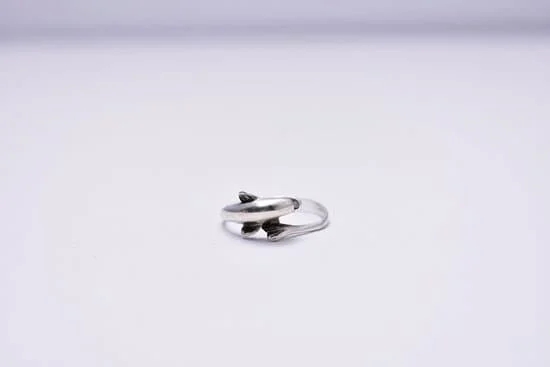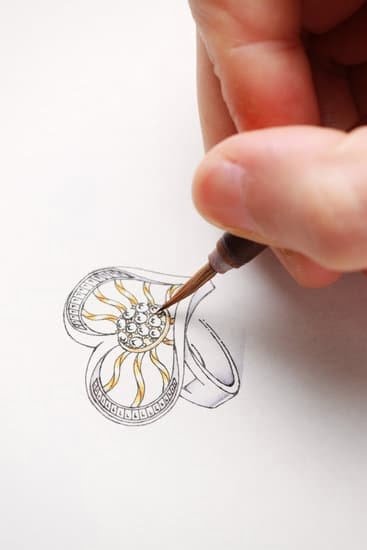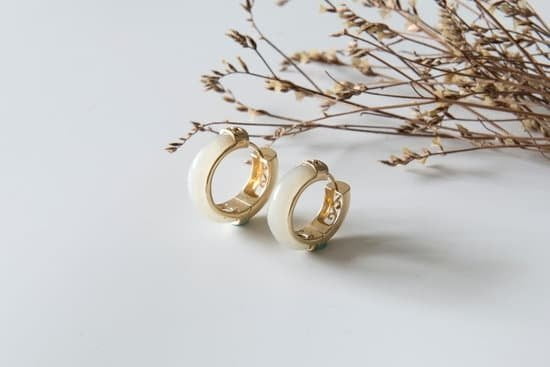The history of Egypt jewelry dates back thousands of years, offering a fascinating glimpse into the ancient culture and craftsmanship of the Egyptian people. From intricate designs to symbolic meanings, the jewelry of ancient Egypt has left a lasting legacy that continues to captivate modern audiences. This article delves into the rich history and significance of Egyptian jewelry, exploring its cultural, social, and artistic importance.
Ancient Egyptian jewelry was not just an adornment; it held deep symbolism and significance in society. From amulets for protection to intricate burial jewelry, each piece had a specific purpose and meaning. The materials and techniques used in creating these pieces also reflected the skilled craftsmanship of the ancient Egyptians, showcasing their mastery in metalwork, gem cutting, and bead making.
Throughout different dynasties, the evolution of Egyptian jewelry designs can be seen, reflecting the changing styles and influences over time. Different social classes also had distinct types of jewelry; from pharaohs adorned with elaborate gold pieces to commoners wearing simpler designs made from more affordable materials. And even today, ancient Egyptian jewelry continues to inspire modern fashion and design, leaving a lasting legacy that is celebrated in museums and exhibitions around the world.
The allure of ancient Egyptian jewelry goes beyond its aesthetic appeal; it provides a window into the culture, beliefs, and artistry of one of the world’s oldest civilizations. Exploring this rich history offers insights into how jewelry has always been intertwined with human expression and identity.
Symbolism and Significance of Jewelry in Ancient Egypt
The ancient Egyptians placed great importance on jewelry, considering it to be not just an adornment but also a symbol of status, wealth, and power. Jewelry held deep symbolism and significance in ancient Egyptian culture, playing a vital role in both religious and everyday life.
Religious Symbolism
In ancient Egypt, jewelry was often associated with religious beliefs and rituals. Many pieces of jewelry were adorned with symbols representing various gods and goddesses, such as the Ankh for life, the Eye of Horus for protection, and the Scarab for rebirth. These symbols were believed to bring protection and good fortune to the wearer, both in this life and the afterlife.
Social Significance
Jewelry also served as a status symbol in ancient Egypt, indicating one’s wealth and social standing. The amount and quality of jewelry worn by an individual often reflected their position in society. For example, members of the royal family and high-ranking officials would wear elaborate jewelry made from precious metals and gemstones, while the common people would wear simpler pieces made from more affordable materials.
Personal Beliefs
Aside from religious and social symbolism, jewelry also held personal significance for individuals in ancient Egypt. Many pieces of jewelry were believed to have magical properties or to provide protection against evil spirits or illnesses. Amulets were commonly worn as jewelry to ward off harm or illness, showcasing the belief that jewelry was not only a form of adornment but also a source of protection and well-being.
The history of Egypt jewelry reveals just how deeply ingrained it was in all aspects of ancient Egyptian life – from religion to social status to personal beliefs – making it an integral part of their culture that continues to fascinate individuals around the world today.
Materials and Techniques Used in Ancient Egyptian Jewelry
Ancient Egyptian jewelry holds a significant place in the history of Egypt jewelry. The materials and techniques used in creating these exquisite pieces were advanced for their time, and their craftsmanship still amazes archaeologists, historians, and jewelry enthusiasts to this day.
The ancient Egyptians utilized a variety of materials to create their jewelry, including gold, silver, gemstones such as lapis lazuli and turquoise, as well as glass beads. These materials were highly prized and often imported from other regions, highlighting the value placed on jewelry in ancient Egyptian society.
The techniques employed by ancient Egyptian jewelers were also highly sophisticated. They used intricate metalworking methods such as soldering and granulation to create elaborate pieces. Additionally, they developed the art of inlaying gemstones into metal settings, resulting in stunning, colorful designs that have stood the test of time.
The skills and techniques used by ancient Egyptian jewelers were not only advanced for their time but also indicative of the high status placed on jewelry in society. The intricacy and beauty of these pieces continue to inspire contemporary jewelers and serve as a testament to the unparalleled craftsmanship of ancient Egyptian artisans.
- Materials Used in Ancient Egyptian Jewelry
- Gold
- Silver
- Gemstones
- Glass beads
- Techniques Employed by Ancient Egyptian Jewelers
- Soldering
- Granulation
- Inlaying gemstones into metal settings
Types of Jewelry Worn by Different Social Classes
Ancient Egyptian society was highly stratified, with distinct social classes that included the pharaoh and royal family, the nobility, the priesthood, and the common people. Each social class had its own distinctive styles of jewelry that were worn for various purposes.
Pharaoh and Royal Family
The pharaoh and royal family members wore the most elaborate and extravagant jewelry in ancient Egypt. They adorned themselves with intricate headdresses, collars, bracelets, amulets, and rings made from precious metals such as gold and silver. These pieces often featured precious gemstones like lapis lazuli, turquoise, carnelian, and jasper. The jewelry of the pharaoh and his family not only served as symbols of their wealth and status but also held religious significance.
Nobility
Members of the noble class also wore luxurious jewelry, although their pieces were generally slightly less ornate than those worn by royalty. They favored similar types of jewelry to the pharaoh’s family but typically used fewer precious metals and gemstones in their construction.
Common People
The common people of ancient Egypt also wore jewelry as a form of adornment and for protective purposes. However, their pieces were much simpler in design and were often made from materials such as leather, bone, shells, clay beads, and faience. These pieces were more affordable for the average person but still held personal significance in everyday life.
Understanding the types of jewelry worn by different social classes provides valuable insight into the societal structure and cultural practices of ancient Egypt. This diversity in jewelry reflects not only status differences but also varying beliefs about beauty, protection, and spirituality. The history of Egypt jewelry offers a fascinating glimpse into the rich tapestry of ancient Egyptian civilization.
Evolution of Egyptian Jewelry Designs Over Different Dynasties
Ancient Egyptian jewelry has a rich and diverse history that spans thousands of years, with each dynasty leaving its unique mark on the designs and styles. Throughout the various dynasties, Egyptian jewelry evolved in terms of materials used, techniques employed, and the fashion trends of the time. Here are some key points to consider when examining the evolution of Egyptian jewelry designs over different dynasties:
- Predynastic Period (6000 – 3100 BCE): During this era, simple jewelry pieces were made from natural materials such as shells, bones, and feathers. These early adornments were often used for religious or ceremonial purposes.
- Old Kingdom (3100 – 2180 BCE): The use of precious metals such as gold and silver became more widespread during this period. Jewelry designs also became more intricate and symbolic, often featuring motifs related to the afterlife, deities, and royalty.
- New Kingdom (1550 – 1070 BCE): This was a period of great prosperity and expansion for Egypt, reflected in the opulence of their jewelry. Elaborate gemstone settings, colorful enameling techniques, and intricate filigree work became popular during this time.
As we can see from these examples, the evolution of Egyptian jewelry designs over different dynasties reflects not only changes in fashion but also shifts in social structure, technological advancements, and cultural influences. This rich tapestry of styles continues to inspire designers and artists around the world today.
Famous Pharaohs and Queens Known for Their Extravagant Jewelry Collection
Ancient Egypt’s history and culture are rich with beautiful and ornate jewelry, much of which can be attributed to the extravagant collections of famous pharaohs and queens. These iconic figures in Egyptian history were known for their immense wealth and power, and their jewelry collections served as a symbol of their status and authority.
One of the most famous pharaohs known for his stunning jewelry collection is Tutankhamun, also known as King Tut. When his tomb was discovered in 1922 by Howard Carter, it revealed an incredible treasure trove of jewelry, including elaborate gold death masks, amulets, bracelets, and rings. The discovery of King Tut’s tomb gave the world a glimpse into the opulence and luxury that ancient Egyptian royals enjoyed.
Another notable figure is Queen Cleopatra, whose legendary beauty and charm were complemented by her extensive collection of jewelry. She was often depicted wearing intricate headdresses, collars, earrings, and bracelets made from precious metals and gemstones. Cleopatra understood the power of symbolism and used her jewelry to convey her regal authority and allure.
The legacy of these famous pharaohs and queens lives on through their extravagant jewelry collections, which continue to inspire modern fashion designers and jewelry craftsmen. The influence of ancient Egyptian jewelry can be seen in contemporary designs that incorporate symbols such as the ankh, scarab beetle, or lotus flower, as well as the use of lapis lazuli, turquoise, and gold – materials favored by ancient Egyptians for their cultural significance.
| Famous Figures | Notable Jewelry |
|---|---|
| Tutankhamun | Elaborate gold death masks, amulets, bracelets |
| Cleopatra | Intricate headdresses, collars, earrings |
Influence of Ancient Egyptian Jewelry on Modern Fashion and Design
The history of Egypt jewelry has had a significant influence on modern fashion and design, with the traditional Egyptian styles often reinterpreted and incorporated into contemporary trends. The ancient Egyptians were known for their intricate and ornate jewelry designs, which included a wide range of materials such as gold, precious stones, and faience. These timeless pieces have served as a source of inspiration for many fashion designers, jewelry makers, and artists around the world.
In today’s fashion industry, there is a clear resurgence of Egyptian motifs and symbols in accessories and clothing. From scarab beetle pendants to ankh earrings, these iconic elements are being embraced by designers who seek to infuse their collections with the mystique and elegance associated with ancient Egypt. Additionally, the use of hieroglyphic patterns and pharaonic imagery in textiles and prints has become increasingly popular, further illustrating the enduring impact of ancient Egyptian jewelry on modern design.
Moreover, current jewelry making techniques have also been influenced by the craftsmanship of ancient Egypt. The use of granulation, filigree work, and cloisonné enamel-all methods employed by ancient Egyptian artisans-are being revived by contemporary jewelers who appreciate the sophistication and artistry of these age-old techniques. As a result, we continue to see pieces that evoke the spirit of ancient Egypt while incorporating modern sensibilities.
| Aspect | Data |
|---|---|
| Influence on Modern Fashion | Ancient Egyptian motifs and symbols are often reinterpreted in contemporary trends |
| Jewelry Making Techniques | Ancient methods such as granulation and cloisonné enamel are being revived by modern jewelers |
| Hieroglyphic Patterns | Modern designers incorporate pharaonic imagery in textiles and prints |
The Legacy of Ancient Egyptian Jewelry
In conclusion, the history of Egypt jewelry holds a significant place in the world of art, design, and fashion. The exquisite craftsmanship, use of symbolic elements, and the wide variety of materials used in ancient Egyptian jewelry have left a lasting impact on cultures around the world. This legacy is evident in the numerous museums and exhibitions dedicated to preserving and showcasing these stunning pieces of history.
Museums and exhibitions around the world pay homage to the rich tradition of ancient Egyptian jewelry, allowing visitors to marvel at the intricate designs and learn about the cultural significance behind each piece. These artifacts serve as a window into the past, offering insight into the lives, beliefs, and values of ancient Egyptians. The influence of these artifacts can be seen in various aspects of modern fashion and design, demonstrating their enduring appeal.
The popularity of ancient Egypt jewelry has sparked interest not only among historians and archaeologists but also among artists, designers, and enthusiasts. Through these museums and exhibitions, the legacy of ancient Egyptian jewelry continues to thrive as it inspires new generations to appreciate the beauty and craftsmanship of this remarkable art form. As we continue to uncover more about this ancient civilization, it is certain that the allure of Egypt’s magnificent jewelry will endure for many generations to come.
Frequently Asked Questions
What Did Egyptian Jewelry Symbolize?
Egyptian jewelry symbolized status, wealth, and religious beliefs. It was often used to adorn both the living and the dead, with intricate designs and precious materials denoting power and spirituality.
When Did Egyptians Start Wearing Jewelry?
Egyptians started wearing jewelry as early as 4000 BC, during the Predynastic period. Jewelry was worn by both men and women, and it held significant cultural and religious importance in ancient Egypt.
What Was the Most Common Egyptian Jewelry?
The most common Egyptian jewelry included amulets, necklaces, bracelets, earrings, rings, and anklets. These pieces were often adorned with symbols such as the ankh, scarab beetle, or the Eye of Horus, representing protection and good luck.

Welcome to my jewelry blog! My name is Sarah and I am the owner of this blog.
I love making jewelry and sharing my creations with others.
So whether you’re someone who loves wearing jewelry yourself or simply enjoys learning about it, be sure to check out my blog for insightful posts on everything related to this exciting topic!





